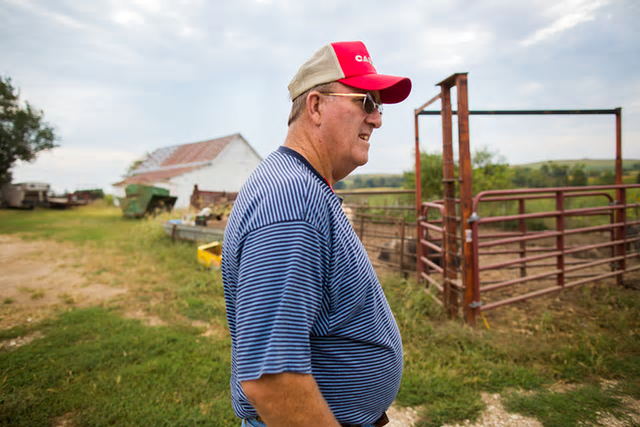Dr. Rosmanm started working to combat this epidemic with a fervor after the first rumblings emerged during the 1980 farming crisis.
Rosmann worked on providing free counseling, referrals for services, and community events to break down stigmas of mental health issues among farmers. “People just did not deal with revealing their tender feelings. They felt like failures,” says Rosmann.
During the height of the farm crisis, telephone hotlines were started in most agricultural states.
“And what was the impact?”
“We stopped the suicides here,” he says of his community in Iowa. “And every state that had a telephone hotline reduced the number of farming related suicides.”
But the work of Rosmanns has been inhibited due to the conflicting role of the government in providing mental health resources to the populous.
In 1999, Rosmann joined an effort called Sowing Seeds of Hope (SSOH), which began in Wisconsin, and connected uninsured and underinsured farmers in seven midwestern states to affordable behavioral health services. In 2001, Rosmann became the executive director. For 14 years, the organization fielded approximately a half-million telephone calls from farmers, trained over 10,000 rural behavioral health professionals, and provided subsidized behavioral health resources to over 100,000 farm families.
Rosmann’s program proved so successful that it became the model for a nationwide program called the Farm and Ranch Stress Assistance Network (FRSAN). Rosmann and his colleagues were hopeful that farmers would get the federal support they so desperately needed – but though the program was approved as part of the 2008 US Farm Bill, it was not funded.
The program, which would have created regional and national helplines and provided counseling for farmers, was estimated to cost the government $18m annually. Rosmann argues that US farmers lost by suicide totals much more than this – in dollars, farmland, national security in the form of food, and the emotional and financial toll on families and entire communities. In 2014, the federal funding that supported Rosmann’s Sowing Seeds of Hope came to an end, and the program was shuttered.
But that is not to say that a few individuals have nonetheless had their life’s changed while these programs were in full effect.
Meet John Blaske.

John Blaske overlooking his farm in Onaga Kansas
Head on over to the next page to hear his story and how he is taking back his life

A Trump supporter calling someone ignorant
HAHAHA
Liberals, just when you think they can’t get any dumber they go and prove you wrong.
Probably could read whole article if stupid survival technics would stop sensoring it so I can’t read it. Thanks FB. I see again you do that want us to know the truth. Leave the articles alone.
I don’t think they are killing themselves I think they are being killed…
I don’t believe this headline at all.
Yes, it in infuriating to have the stupid ad pop up so you can’t read the entire article! Done on purpose so censor? I have complained about it several times but FB doesn’t take it down.
So American can import food from China, India and rest countries
INDIAN’S from India and many other countries farmers are doing the same thing. Government regulations of requirements of genetic altered seed to get more fruiting etc. And rules and regulations on how they are extorted to use what the government programs force ,are putting them into slavery and as servants. These seeds are sterile after the first crop and these folks are at the government’s mercy if they want to survive. This is the munipulation the government forces to get control of every citizen and their lands . No self sufficient citizen in the world is valuable because they must have the heel in their backs ,submission!
Praying for our Farmers.Hard working folks.
THIS IS LIBERAL PROPAGANDA